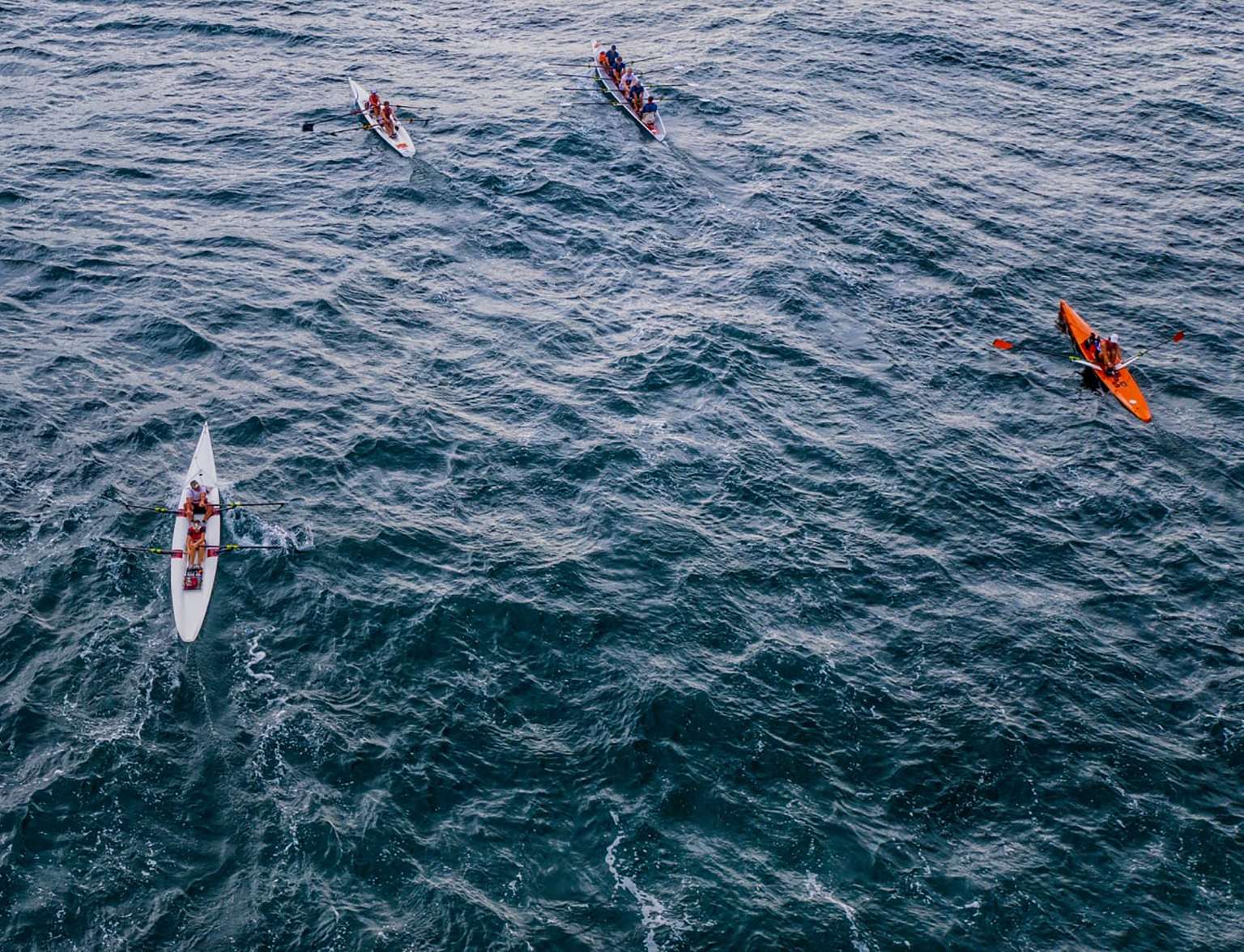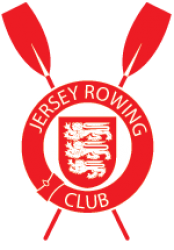FIXED SEAT BOATS:
A1. BOATS: must be a conventional sea-going craft.
A2. ALL BOATS: of 4.3m and under must have a beam of not less than 1.07m. All others, except entries in the open class, must have a beam of not less than 25% of the overall length, beam to be measured at gunwale height to the outside surface of the skin.
A3. HULL SHAPE: No external projections of the hull above the water line except for fitting or moulding flange. One reverse shear of 3.7cm is permitted above the water line. On all fixed seat boats the pin or gate shall be within 2.5cm from the internal hull skin.
A4. DIMENSIONS: boats will have a minimum internal depth of 38cm. This measurement will be required for the whole rowers’ cockpit area, and will be entered in the following classes subject to the maximum lengths stated, excluding rudder. Singles 4.9m. Doubles 6.1m. Fours 7.35m. Sixes 8.55m. Open 9.15m. Whalers may be entered in the open class only.
A5. WORKBOATS: are defined as standard heavy craft, purpose built for fishing etc. eligibility subject to scrutiny.
A6. OPEN CLASS BOATS: are orthodox craft built to offshore rowing requirements. Maximum length 9.15m, minimum beam 1.065m.
A7. FITTINGS: on all classes, rowlocks or gates must be attached directly onto the gunwales. No outriggers are permitted. Seats must be fixed, with no sliding fittings. It is also recommended that coxed boats have a pump fitted in addition to carrying a baler and that all the non-coxed boats should have automatic pump i.e. singles or pairs.
B2. B3. B4.
Max Length 6m 7.5m 10.7m
Min Beam 0.75m 1m 1.3m
Horizontal Measure (X) 22.5cm 35.0cm 45.0cm
Vertical Measure (Y) 19.0cm 23.0cm 30.0cm
HULL SHAPE when measured horizontally from the centreline of the hull (X), at its widest point, the hull must intercept a point less than the vertical measurement (Y) above the bottom of the hull.
SLIDING SEAT: boats shall either be of a wash deck construction or have venturi type or electric bailers fitted.
OUTRIGGERS: shall be permitted on sliding seat boats only.
C1. approved type and in date, 2 to be orange smoke, a whistle or audible warning device, A suitable hand bailer or manual bilge pump, wash deck boats exempt, 1 British standard type approved life jacket per crew member, non swimming competitors will wear a life jacket at all times while afloat. At the discretion of the race officials the spare oar for singles boats may be carried by that boat’s guard boat. The organisers recommend that the above safety equipment also be carried during any training.
C2.BOUYANCY: Shall be fixed firmly in all boats so as to support the boat and crew on an even keel if swamped. The minimum buoyancy requirement is 22.5 litres volume per crew member. This equates to approximately 22,500 cubic centimetres
C3. TOWING RING: A firmly fitted and adequate towing ring with minimum 6mm diameter rope attached, minimum length of 10m must be provided forward, the rope to be fixed in place for the duration of the race.
C4. CREW: No member of any crew will be under 14 years of age on the date of the race. No person will be able to compete unless the organisers are in possession of a completed insurance warranty and for under 16s a parents’ or guardians’ written consent. Any alterations to crew lists supplied with the entry form must be notified to the scrutineers prior to the start. A female crew may have a male coxswain or visa-versa, but this may affect the eligibility for certain trophies, a mixed crew shall contain equal numbers of male and female rowers. Once the race has started coxswains may not take the place of any rower. No relief crew may be carried.
C5. GUARDBOATS: All entries will be accompanied by a guardboat. The name, size and colour of which must be given on the entry form and the guardboat skipper’s name must be included. All Jersey skippers must attend a safety briefing as specified by the organising committee. Competitors are reminded that the organisers do not accept responsibility for providing guardboats or tows to Sark. Entries without guardboats will not be allowed to start the race.
C6. MARKINGS: A race number will be allocated when your entry is accepted. Note – race numbers allocated to boats will be left unchanged if possible. This number must be displayed on both sides of the boat at the bow within the first three feet of the boat in black on a white background. Also a black number on a fluorescent background must be placed on the bow or stern buoyancy tank, to be read from the bow. All numbers must be completely visible above the waterline. Boats losing their number between the start and finish risk disqualification. All guard boats must display the number of the rowing boat that they are escorting; these numbers shall be a black number on a white background. In all cases, rowing &guard boats, all numbers must be in a plain font type that is easily read and be at least 25.0cm high and 5.0cmin thickness. If the number can be inverted, e.g. 9, it must have a black line 2.5cmthick placed underneath it.
C7. ALL ENTRANTS: Must report to the scrutineers and check in at Dixcart bay with minimum compulsory equipment at least 1 hour before the start time. Further, if you arrive in Sark with your boat damaged, please advise the scrutineers.
C8. SCRUTINY TAGS: Will be issued to each race entry. These must be handed in to the committee representative at the refreshment table after the finish or in the event of retirement to a radio guardboat Skipper. Failure to notify the control
ALL BOATS: MINIMUM COMPULSORY EQUIPMENT: 3 oars, 3 rowlocks or gates and pins, A sharp knife, a torch, 3 flares, 5 boat of an entry’s retirement jeopardises the safety of other rowers, so please try to ensure that the information is radioed in. Failure to hand in your scrutiny tag at Bonne Nuit without good reason will result in no time being recorded and disqualification
C9. VHF RADIO: May be carried by entrants but should only be used in an emergency and only by those licensed to do so. Electronic navigation aids will be permitted.
C10. TO CONFORM: With an undertaking made to the Sark authorities, no competitors will make arrangements to stay overnight in Sark on the Friday preceding the race unless the individual names of the competitors, escort boat crew and all other passengers in the overnight party are notified to the race committee at least one week before the race.
C11. THE INTER-ISLAND: Competition for the Le Poidevin Trophy will be competed for by all classes on a points system as follows: In any class the entries from each Island will be totalled and the Island submitting the least starters in a class will determine the number of points for that class. e.g. 5 singles Guernsey, 4 singles Jersey therefore 4 points available for that class. The first singles will receive 4 points, second 3 points, third 2 points & fourth 1 point.
C12. COMPETITOR HELPERS: Each Jersey crew must provide one helper (minimum age 18) on race day for a minimum of 4 hours.
C13. COMPETENCY: Any crew or individual entering the Sark to Jersey race without the approval of an established rowing club may be asked to prove their competency to complete the race to the satisfaction of the Jersey Rowing Club’s Committee (“JRC”)
C14. NEW*** MEDICAL CONTITIONS: It is each rower’s responsibility to inform their guardboat skipper of any known medical conditions.
C15. NEW*** PATERNOSERS PASSAGE: A channel of orange/yellow buoys will be in place to the west of the Paternosters. All rowing boats must pass through this channel to be checked off by the marker boat. This is a safety measure. Guard boats and other motor boats must pass outside of this channel to the west so as not to impede the rowing crews.
Note: Please check your car insurance before you tow a rowing boat. Some insurance companies do not automatically cover towing.

